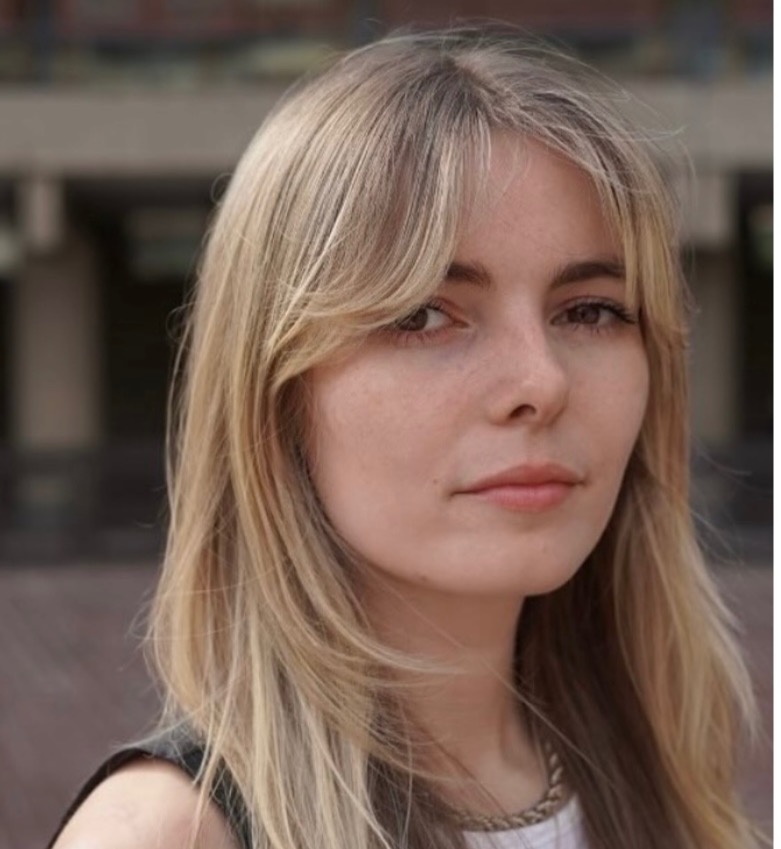
From Stage to Sovereignty: Laurie Fayr’s journey from acting to assisting on The Crown, Season 6
“Good morning lovely”. I rub my eyes awake, adjusting to the four-hour time difference for our 6 a.m. interview. A softly spoken young woman answers the Zoom call, her voice warm with gratitude for arranging a time that suited. Laurie Fayr is in Mauritius. Behind her, in a lavish hotel room, is a wallpaper peppered with palm trees. And although the real ones weren’t too far away, I am, she jokes, keeping her from a piña colada.
Draped in a woollen lemon jumper, casually hanging off one shoulder despite the sweltering 35-degree heat, Laurie Fayr embodies the quintessential creative look. It is a fitting image for someone whose life has been shaped by performance and the arts. “Ever since I was a little girl, I thought for a really long time, I wanted to be an actor. I had this hope and dream, but then I became drawn to curating the pieces rather than just performing.” Her instinct to dissect a performance rather than simply exist within it would go on to influence her directorial input on The Crown, shaping its portrayal of an institution built on performance and tradition.
Fiddling with a red hair ribbon in front of her, Laurie Fayr reflects on the challenges of her transition from acting to assisting The Crown’s director, Alex Gabassi. Her first attempt at directing a play in her final year at The University of Liverpool ended with rejection. Yet, this did not deter Laurie, with her shoulders pinned back, she recalls that 19-year-old Laurie swallowed the rejection and thought “okay, well, I'm just going to go and do it myself.” Undeterred she poured what little student money she had into staging a play written by her Grandad. Transforming his passion project into a 5-day sold-out production that went on to tour round his birthplace of Ireland, Laurie catapulted into the theatrical directing world, earning herself a coveted spot on the prestigious Liverpool Playhouse’s director training course.
Yet ironically, Laurie still owes her Assistant to the Director role on The Crown, to acting, a path she actively avoided for five years. Her journey began as an extra in the 2015 readaptation of Cinderella, staring Lily James. But rather than embracing the fairytale role, Laurie took a more strategic approach: “I methodically went round and asked every single person there how they got their job and what they did.”
Listening to Laurie, with her beautifully crafted sentences and spell bounding anecdotes, it is undeniable that storytelling is innately in her DNA. So, it’s of no surprise that a runner on the set reached out and offered her a foot in the door as a COVID Set Marshal. Asking actors to open wide and swab the insides of their mouths may not seem glamourous, but she reflects on this time fondly as she explains “watching people in their element, creating something at the top of their game, is just incredibly impressive.”
Discussing how she used her theatrical background to move forward as an assistant to Alex Gabassi, she divulges that she started to become more than just his admin assistant but rather his soundboard. Her deep understanding of character studies fostered trust between her and Alex Gabassi, allowing her to go beyond the typical scope of administrative tasks. Having been an actor herself, Laurie recognises how the Royals must uphold the roles that they are cast into. But unlike most, she also possesses the ability to deconstruct that façade and reveal the human truths underneath. Laurie explains that “the Royals are people with very odd and specific circumstances that no one could ever possibly understand. But they are still people, they still bleed, they still feel.” Laurie doesn’t just see The Royals as relics of tradition. She studied them meticulously, using research packs, to see them instead as performers caught in a lifelong role that they did not choose.
Laurie’s humanising perspective of The Royal Family crescendoed during Episode 8 of Season 6, when her envisioned sequence of Princess Margaret’s (Lesley Manville) MRI scan came to life on screen. She explains, “I thought it would be powerful if Princess Margaret had some expensive earrings on because she often hid behind big fashion and big sunglasses, as it felt like a cloak for her. And I think taking all of that off because you have to for the MRI, the magnets, is an extra step of vulnerability. It’s funny really as The Royals are perceived to be this very grand thing, but when it comes down to it, they're just like the rest of us, human, you know.” Championing both the beauty of performance but also the vulnerability of those who live within it, Laurie uses her theatrical perspective to peel back the layers on what seems like a daunting institution. Bringing empathy and compassion to the screen, she reminds us that behind the crown, there is always a person playing a role.
As our conversation comes to an end, we are interrupted by a sudden knock at the hotel room door. Hearing squeaking wheels, a tray of room service enters the room. Front and centre of the tray, topped with a pink umbrella, her promised piña colada awaits. “Cheers!”
Post a comment